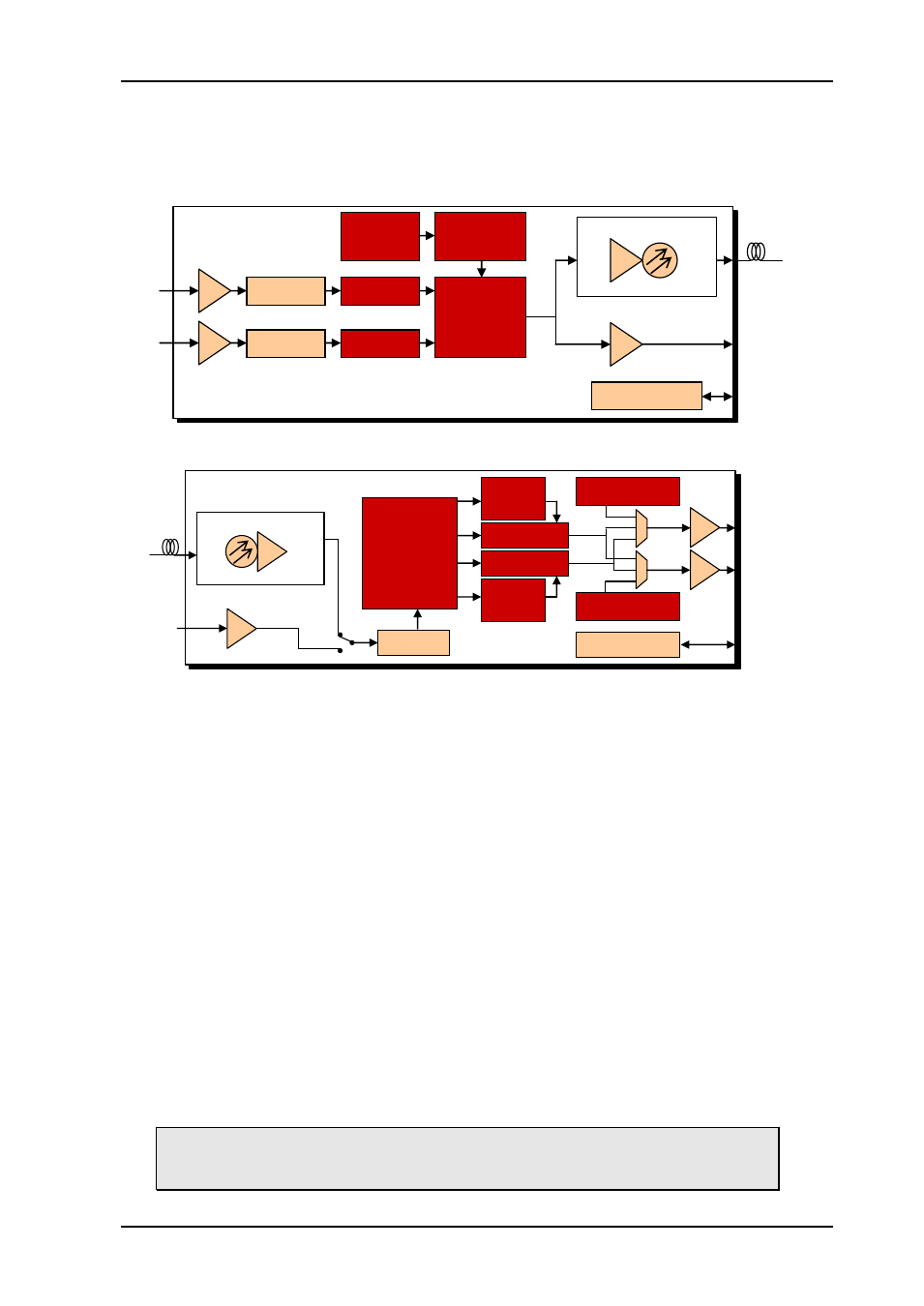4 description, 1 the hd-td-3gmx-2 and hd-td-3gdx-2, 4description – Nevion SDI-TD-3GMX-5 User Manual
Page 10

HD-TD-3GMX-2 / HD-TD-3GDX-2 and SDI-TD-3GMX-5 / SDI-TD-3GDX-5
Rev. F
nevion.com | 10
4
Description
4.1 The HD-TD-3GMX-2 and HD-TD-3GDX-2
EQ
HD/SD
input 1
EQ
Reclocker
Reclocker
Remapper
3G Frame
Generator
Remapper
3G Time
Division
Multiplexer
Optical Transmitter
HD-TD-3GMX-2
Microcontroller
Remote
Control
Electrical Transmitter
Optical
Fiber
3G El.
Transp. Out
3G Clock
HD/SD
input 2
3G Opt.
Transp. Out
Figure 1: Logical building blocks for the HD-TD-3GMX-2(-T)
3G Opt.
Transp.
In
Reclocker
HD/SD
3G Time
Division
Demultiplexer
Optical Receiver
HD-TD-3GDX-2
Microcontroller
Remote
Control
Electrical Receiver
Optical
Fiber
CLK
regen.
3G El.
Transp.
In
HD/SD
output 1
EQ
HD/SD
HD/SD gen.
HD/SD gen.
CLK
Regen.
HD/SD
output 2
Figure 2: Logical building blocks for the HD-TD-3GDX-2(-R)
The HD-TD-3GMX-2 board embeds up to two independent HD or SD video streams in one
output 3G stream. After the two HD or SD streams have been remapped, to avoid synch-
word conflicts with the transport stream frame, they are embedded in a 2.97 Gbps (3GHD)
stream in a proprietary protocol which is still compliant to the SMPTE 424-2006 and
SMPTE 425-2006 Level B standards. In order to reduce latency, the streams are
embedded asynchronously to each other and to the transport stream. The combined
latency of the HD-TD-3GMX-2 and HD-TD-3GDX-2 boards is always well below 100µs.
If the two HD streams were fully synchronous when entering the HD-TD-3GMX board, they
can have individual phase shifts of several samples after being demultiplexed at the HD-
TD-3GDX-2 end, but the clock frequencies will be the same as soon as the system has
stabilized (after a few seconds).
After demultiplexing in the HD-TD-3GDX-2 board, the data structure that was remapped on
the sender side will be restored and the data rate (pixel clock) will also be restored to
exactly the same rate as it was received on the HD-TD-3GMX-2 board.
The 3G signal is seen and transported as a standard 3G-SDI Level B (1080/30p) video by
external equipment. No other format can be set at the sender side of the link and no other
format will be accepted at the receiver side of the link. An HD-TD-3GDX-2(-R) or an SDI-
HD-3GDX(-R) board is required to reconstruct the two HD signals from the 3GHD at the
receiving end.
Note that frame synchronization or switching of the 3G transport signal should
be avoided, as switching or repeated/deleted frames will cause severe signal
failures in the recovered streams at the receiving end of the link.